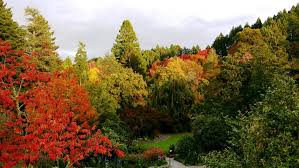Discover the National Arboretum: A Centre for Conservation

Introduction to the National Arboretum
The National Arboretum, located in Canberra, is an essential site for conservation, recreation, and education. Established in 2005, it is a living testament to the importance of preserving tree species and promoting biodiversity in an ever-changing climate. With over 44,000 trees from various species planted across 100 hectares, the arboretum plays a vital role in environmental research and restoration, making it a crucial resource for both conservationists and the general public.
Features and Attractions
The arboretum features an extensive collection of trees from around the world, strategically planted to showcase their growth and ecological significance. Among the most notable collections are the conifer forest, the Australian native woodland, and the rare and endangered species garden. Visitors can walk through beautifully designed trails, participate in guided tours, or attend educational workshops aimed at engaging the community with the vital role trees play in our ecosystem.
Recent Developments and Events
In recent months, the National Arboretum has seen a surge in visitors, spurred by increased awareness of environmental issues and a growing appreciation for nature. Following renovations and improvements in visitor amenities, including a new café and enhanced pathways, the arboretum reported a 30% increase in attendance year-on-year. Special events, including tree planting days and gardening workshops, have also contributed to this rise by fostering a sense of community involvement in conservation efforts.
Significance for the Future
The significance of the National Arboretum extends beyond its role as a tourist destination; it serves as an essential platform for research and education about climate change and biodiversity. As global awareness of environmental challenges increases, the arboretum’s contributions to conservation science will be increasingly crucial. Future projects include the expansion of educational programmes aimed at schools and greater involvement in international conservation efforts. This commitment to sustainability and education ensures the arboretum remains relevant in ongoing discussions about climate action.
Conclusion
The National Arboretum stands as a vital resource not only for Canberra but for all of Australia and the global community concerned with environmental preservation. Its expansive collections and educational initiatives exemplify how green spaces can contribute to both personal well-being and broader ecological goals. As climate debates continue, institutions like the National Arboretum will be pivotal in shaping the discourse and actions surrounding biodiversity and conservation for generations to come.









